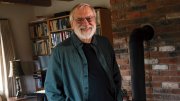To make attending the College more affordable for lower- and middle-income families, Harvard has extended the financial-aid initiative it inaugurated in 2004 (see “Class-conscious Financial Aid,” May-June 2004, page 62). As announced on March 30, parents in families whose income is less than $60,000 will no longer have to contribute to the cost of their children’s undergraduate education (the limit had been $40,000), and the parental contribution will be reduced for families whose incomes are between $60,000 and $80,000 (the ceiling had been $60,000). In addition, students can now apply any outside scholarships they receive to offset their summer-savings obligation of $2,150; previously, such offsetting use of scholarship funds had been permitted to apply only to the students’ academic-year obligation, which has been $3,650.
The additional $2.4-million annual cost of the enhanced program will be funded by the central administration, rather than by the Faculty of Arts and Sciences (FAS) budget, at least until additional fundraising can cover the incremental expense. At the time it posted the 2006-2007 undergraduate term bill, FAS had already announced that its regular financial-aid budget would increase by 6.2 percent, to $90 million (see “Brevia,” page 77).
A recent analysis of the aid initiative found a 1.8 percentage point gain in enrollment from targeted families during the first year of outreach. Enrollment rose to 16.6 percent of the class of 2009, a gain of 29 students (to 245 of 1,478). The study, which excludes international students, showed that recruiting efforts encouraged more applications from students in these economic strata, and that with further outreach, still more applications could be expected. The lead authors of the study (“Cost Should Be No Barrier,” www.nber.org/papers/w12029) are Larsen professor of public policy and management Christopher Avery (see "Assessing Admissions") and Freed professor of economics Caroline M. Hoxby; their coauthors are four Harvard students.
Harvard’s 2004 initiative sparked similar efforts at many other schools. A year later, Yale began a program with a $45,000 threshold. Stanford, having wooed away Yale’s admissions and financial-aid dean, cloned that program this March. The next week, the University of Pennsylvania announced that it would eliminate the contribution for families earning $50,000 or lessa particularly significant commitment, given Penn’s $4-billion endowment, a fraction the size of its rivals’. Taking a different approach, MIT beginning this fall will match the Pell Grants received by all eligible studentsan aid increment worth up to $4,050 per year. And the Jack Kent Cooke Foundation and eight selective institutions (including Amherst, Cornell, the University of North Carolina at Chapel Hill, and Berkeley) will jointly commit $27 million to assist qualified low-income students in transferring from community colleges to four-year schools.
With the new resources invested in its aid program, Harvard raises the bar, and furthers the trend toward attracting academically qualified students whose family economic circumstances might well discourage them from pursuing an elite education that costs well above $40,000 a year.





